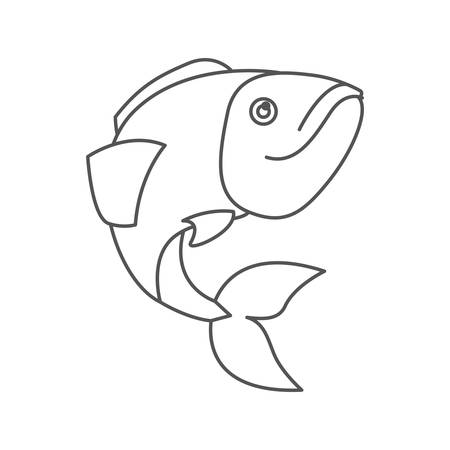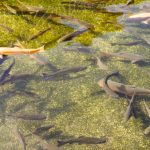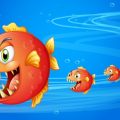Introduction to Salmon Fishing in the Pacific Northwest
Salmon fishing in the Pacific Northwest is more than a pastime—it’s a time-honored tradition that draws anglers from every corner of the United States. With its legendary runs of Chinook, Coho, and Sockeye, this region boasts some of the most productive and scenic fisheries in North America. What makes these waters so magnetic? It’s a unique combination of abundant salmon populations, diverse river systems like the Columbia and the Rogue, and breathtaking landscapes that range from moss-draped rainforests to rugged coastal inlets. For many, casting a line here is not just about the catch; it’s about connecting with nature, community, and a legacy that stretches back generations. Whether you’re a seasoned angler chasing trophy-sized fish or a newcomer eager for your first bite, the Pacific Northwest offers an unmatched adventure. That’s why, year after year, fishing enthusiasts return—drawn by stories of epic battles with wild salmon and guided by local experts who know every bend and rapid. In this article, we’ll explore why salmon fishing adventures with expert guides have become a bucket-list experience for so many Americans.
Understanding Salmon Species and Seasons
If you’re planning a salmon fishing adventure in the Pacific Northwest, it pays to know your salmon. The region is home to several iconic salmon species—Chinook, Coho, Sockeye, and Pink—each with unique characteristics and peak fishing seasons. Whether you’re working with an expert guide or heading out on your own, understanding these differences can make or break your trip.
Main Salmon Species in the Pacific Northwest
| Species | Common Names | Average Size | Key Traits |
|---|---|---|---|
| Chinook | King Salmon | 15-30 lbs (can exceed 50 lbs) | Largest species, prized for flavor and fight |
| Coho | Silver Salmon | 6-12 lbs | Aggressive fighters, bright silver color when fresh from the ocean |
| Sockeye | Red Salmon | 4-8 lbs | Distinctive red flesh, sought after for their taste |
| Pink | Humpy Salmon | 3-5 lbs | Smallest of the four, recognizable by humped back during spawning |
Best Times to Fish Each Species
The timing of your trip can significantly affect your chances of success. Here’s a quick overview of the best seasons for each salmon species:
| Species | Main Runs (Peak Months) |
|---|---|
| Chinook (King) | Late Spring to Early Fall (May–September) |
| Coho (Silver) | Late Summer to Early Fall (August–October) |
| Sockeye (Red) | Mid-Summer (June–July) |
| Pink (Humpy) | Late Summer (August–September, every odd year) |
A Local Perspective on Seasonality
The Pacific Northwests rivers and coastal waters come alive during these runs. Many local anglers look forward to the biannual Pink salmon run, which occurs only in odd-numbered years. Meanwhile, Chinook are a coveted catch almost all season long, especially prized for their size and stamina. Partnering with expert guides ensures you’ll be at the right place at the right time—maximizing your chances of landing that trophy fish.

3. Why Go With an Expert Guide
When it comes to salmon fishing adventures in the Pacific Northwest, going with an expert guide isn’t just a nice-to-have—it’s a game changer for anglers of all skill levels. Local guides bring a wealth of insider knowledge that can make the difference between an average trip and an unforgettable experience. They know the best spots along legendary rivers like the Columbia, Snake, or Skagit, and understand the seasonal patterns that affect salmon movement. This homegrown expertise means you’ll spend less time guessing and more time reeling in impressive catches.
Safety is another key reason to hire a professional guide. The waters of the Pacific Northwest can be unpredictable, with swift currents, changing weather, and remote locations. Experienced guides are trained to navigate these challenges, ensuring your trip is not only productive but also safe. They’re equipped with emergency gear and first aid knowledge, so you can focus on fishing without worry.
Additionally, expert guides enhance the overall fishing experience by sharing tips tailored to your skill level—whether you’re casting for the first time or refining advanced techniques. They provide top-quality equipment, help with bait selection, and offer hands-on instruction to boost your confidence on the water. For families and groups, this personalized attention makes salmon fishing accessible and enjoyable for everyone.
Choosing a local guide supports the community too. Many guides are lifelong residents who are passionate about conservation and responsible fishing practices. By booking with them, you’re contributing to sustainable tourism and helping preserve these iconic fisheries for generations to come.
In short, hiring a knowledgeable guide in the Pacific Northwest turns salmon fishing from just another outdoor activity into a memorable adventure—one filled with learning opportunities, epic catches, and stories you’ll share for years.
4. Gear and Techniques for Pacific Northwest Salmon Fishing
When embarking on a salmon fishing adventure in the Pacific Northwest, having the right gear and understanding local techniques is essential for both seasoned anglers and first-timers. Expert guides in this region know that the combination of specialized equipment and proven methods can make all the difference between a successful outing and going home empty-handed.
Essential Gear Checklist
| Gear Type | Recommended Option | Why It’s Important |
|---|---|---|
| Rod | 8’6”–10’ medium-heavy spinning or casting rod | Provides control and flexibility for large salmon species |
| Reel | Quality spinning or baitcasting reel with smooth drag | Handles powerful runs of Chinook, Coho, and Sockeye |
| Mainline | 20–30 lb braided or monofilament line | Strong enough for big fish, yet sensitive for subtle bites |
| Tackle Box Essentials | Spoons, spinners, plugs, jigs, leaders, swivels, weights | Covers diverse water conditions and salmon preferences |
| Waders & Boots | Chest waders with felt or rubber-soled boots | Keeps you dry and steady when wading rivers or streams |
| Safety Gear | PFD (personal flotation device), polarized sunglasses, hat, sunscreen | Ensures safety and comfort throughout your adventure |
Tackle Recommendations for Local Waters
The Pacific Northwest’s rivers and coastal waters demand tackle that matches both the strength of the fish and the local environment. For river fishing, many guides suggest using cured salmon eggs or sand shrimp under a bobber for drift fishing. In tidal areas and estuaries, trolling with plug-cut herring or bright spoons is a go-to method. When fly fishing, 8- to 10-weight rods paired with sink-tip lines allow you to present colorful streamers effectively to aggressive salmon.
Casting, Drifting, and Fly Fishing Techniques
Casting & Retrieving Lures:
This straightforward approach uses spinners or spoons cast across current seams. Let the lure swing downstream while maintaining tension—salmon often strike as it swings near their holding spots.
Drift Fishing:
A classic Pacific Northwest tactic, drift fishing involves presenting bait (like roe or sand shrimp) along the river bottom. Adjust your weight to keep the bait bouncing naturally in the current without getting snagged.
Fly Fishing:
Local guides recommend swinging large profile flies such as Intruders or Egg-Sucking Leeches through likely salmon runs. Focus on early mornings or overcast days when salmon are most active near the surface.
Pro Tips from Expert Guides
- Tide Timing: Schedule outings around incoming tides for coastal success.
- Knot Knowledge: Master strong knots like the Palomar or improved clinch to prevent break-offs.
- Observe Local Regulations: Always check state fishing rules regarding seasons, limits, and gear restrictions before heading out.
- Hire a Guide: Even experienced anglers benefit from local expertise—guides know where fish are biting and what’s working each season.
The right blend of gear and technique transforms your Pacific Northwest salmon fishing trip into an unforgettable adventure. With expert guides by your side, you’ll not only be well-equipped but also gain insights that maximize your chances of landing that trophy catch.
5. Essential Tips for a Memorable Adventure
Book Smart, Book Early
To get the most out of your Pacific Northwest salmon fishing adventure, start by booking with reputable expert guides. Do your homework—read recent reviews, check social media for authentic feedback, and reach out directly to ask about their experience and local knowledge. Popular seasons fill up fast (especially summer and early fall), so reserve your trip as soon as you settle on your dates. Booking early also gives you more options for accommodations and preferred fishing locations.
Gear Up for the Weather
The Pacific Northwest is famous for its unpredictable weather patterns. Even in summer, mornings can be cool and foggy, while afternoons may turn warm or rainy. Layering is key: bring waterproof jackets, quick-dry pants, and non-slip boots. Don’t forget polarized sunglasses for spotting fish below the surface and a wide-brim hat or cap for sun protection. If you’re unsure what to pack, consult your guide—they know the local conditions better than anyone.
Practice Responsible Fishing
Conservation is at the heart of salmon fishing in the region. Many guides are passionate stewards of these waters, so be prepared to follow best practices: use barbless hooks when required, handle fish gently if practicing catch-and-release, and respect all size and bag limits. Bringing reusable water bottles and minimizing single-use plastics helps keep rivers pristine for future generations. Ask your guide about local conservation efforts or ways you can give back during your trip.
Create Lasting Memories On and Off the Water
Your adventure doesn’t end when you reel in your last salmon. Take time to enjoy everything else the Pacific Northwest has to offer—sample fresh local seafood, explore nearby hiking trails, or visit charming small towns brimming with culture. Capture photos responsibly (keep fish in the water until ready), but don’t let documenting overshadow experiencing each moment. Whether you’re sharing stories around a campfire or connecting with locals over coffee, embracing every aspect of your journey will make it truly unforgettable.
6. Making the Most of Your Trip: Local Culture and After-Fishing Activities
Discovering Nearby Towns
The Pacific Northwest isn’t just about world-class salmon fishing—it’s also home to vibrant small towns that offer authentic local experiences. Towns like Astoria, Oregon, and Port Townsend, Washington, have a unique maritime charm with historic waterfronts, boutique shops, and welcoming communities. Strolling through these towns after a day on the river gives you a sense of the region’s rich heritage and friendly spirit.
Savoring Local Foods
No trip to the Pacific Northwest would be complete without sampling its renowned salmon cuisine. Many local restaurants serve up fresh-caught salmon in creative ways—from classic cedar-planked fillets to smoked salmon chowder or sushi rolls featuring the catch of the day. Don’t miss trying wild salmon at iconic spots like Pike Place Market in Seattle or small family-run diners along the coast, where recipes are often passed down through generations.
Sightseeing Beyond the Water
If you’re looking to stretch your legs after fishing, explore some of the region’s breathtaking natural attractions. Take a scenic drive through the Olympic Peninsula, hike lush forest trails near Mount Rainier, or visit dramatic ocean beaches where you can spot wildlife and enjoy sunset views. For something different, check out local museums and art galleries that celebrate the Pacific Northwest’s fishing legacy and native cultures.
Engaging with Community Events
To really connect with local culture, look for community events that happen throughout the fishing season. Salmon festivals are a highlight in many towns—think live music, craft fairs, educational exhibits, and of course, plenty of delicious food. These gatherings are a great way to meet locals, learn more about sustainable fishing practices, and experience firsthand the region’s deep-rooted love for salmon and its rivers.
Tips for an Enriching Experience
Ask your guide for recommendations on their favorite places to eat or relax after a day on the water. Many guides are lifelong residents who know all the hidden gems—whether it’s a roadside bakery famous for berry pies or an off-the-beaten-path brewery pouring locally crafted ales. Embracing these experiences will round out your salmon fishing adventure, making it not just about landing a big catch but about connecting with the land, people, and traditions that make the Pacific Northwest truly special.

